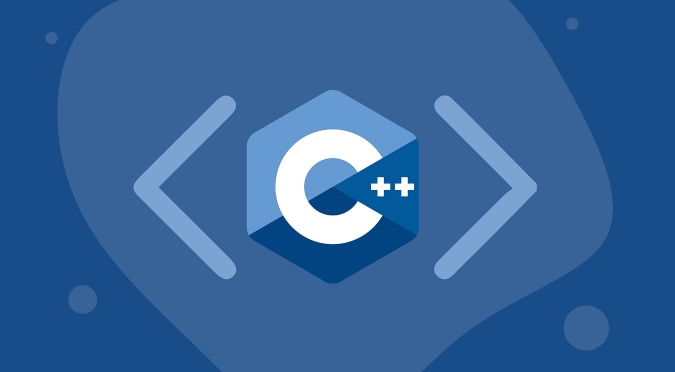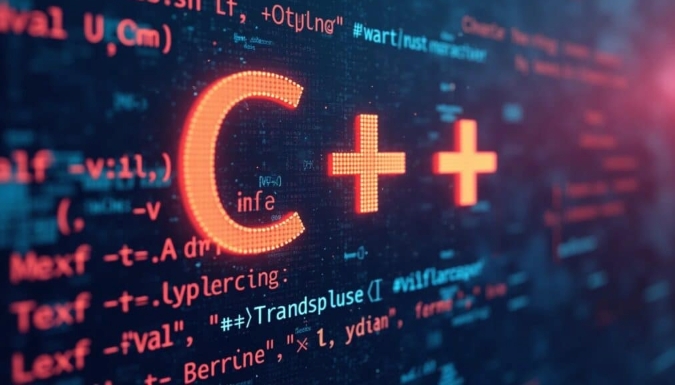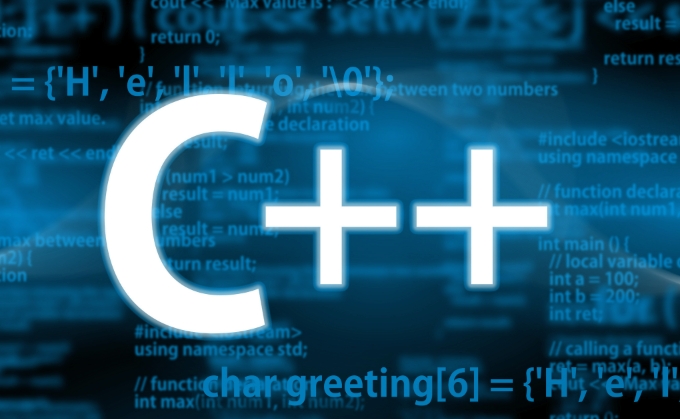How to throw and catch exceptions in C ?
Jul 09, 2025 am 01:58 AMExceptions are handled in C mainly through try, catch and throw. Use try to wrap the code that may cause errors and use catch to catch and process it, such as: 1. It is recommended to catch the standard library exception type by reference to avoid copying; 2. Use throw to throw the standard library exception or custom exception, and the basic type is not recommended; 3. You can create a custom exception class by inheriting std::exception and overwrite the what() method; 4. Exception handling needs to be clearly classified, and use catch with caution to ignore exceptions; 5. The project should decide whether to enable the exception mechanism based on the specifications.

In C, exception handling is mainly achieved through the three keywords try , catch and throw . In short, you can throw an exception in a block of code that may be wrong (using throw ) and then catch and process it where appropriate (wrap the code that may be wrong with try and catch the exception with catch ).

Here are some common practices and precautions in actual operation:

Catch exceptions using try-catch block
When you have a piece of code that may throw an exception, put it in a try block and then follow one or more catch blocks to handle possible errors.
try {
// Code that may throw exception throw std::runtime_error("Something went wrong!");
}
catch (const std::runtime_error& e) {
std::cout << "Caught runtime error: " << e.what() << std::endl;
}
catch (...) {
std::cout << "Caught an unknown exception." << std::endl;
}- You can write multiple
catchblocks according to different exception types. - It is recommended to capture by reference (such as
const std::exception&) to avoid unnecessary copies. - Finally, you can add a
catch (...)to prevent unhandled exceptions from causing program crash.
How and timing of throwing exceptions
Use throw to throw exception objects of any type, but it is recommended to use exception classes in the standard library, such as std::invalid_argument , std::out_of_range , std::runtime_error , etc.

if (index < 0 || index >= size) {
throw std::out_of_range("Index out of bounds");
}- Don't throw basic types (such as
intorchar*) casually, as this is not easy to maintain and lacks semantics. - It is a good habit to explain the possible exceptions thrown in the function interface documentation.
- If you don't plan to handle exceptions, don't catch them and ignore them.
Custom exception type
Sometimes the exception types provided by the standard library are not enough, you can inherit std::exception or its subclass to customize the exception:
class MyException : public std::exception {
public:
const char* what() const noexcept override {
return "Custom exception occurred";
}
};Then you can throw and catch like this:
throw MyException();
catch (const MyException& e) {
std::cout << e.what() << std::endl;
}- Implementing
what()method is the key to return error information. - More member variables can be added to carry error codes or other context information.
Basically that's it. Exception handling is not omnipotent, and all errors are not suitable for exception handling. Whether the exception mechanism is enabled in C depends on the project specification and compiler settings (for example, some embedded environments turn off exception support by default). However, once you decide to use it, you should pay attention to clear structure and clear classification to avoid abuse.
The above is the detailed content of How to throw and catch exceptions in C ?. For more information, please follow other related articles on the PHP Chinese website!

Hot AI Tools

Undress AI Tool
Undress images for free

Undresser.AI Undress
AI-powered app for creating realistic nude photos

AI Clothes Remover
Online AI tool for removing clothes from photos.

Clothoff.io
AI clothes remover

Video Face Swap
Swap faces in any video effortlessly with our completely free AI face swap tool!

Hot Article

Hot Tools

Notepad++7.3.1
Easy-to-use and free code editor

SublimeText3 Chinese version
Chinese version, very easy to use

Zend Studio 13.0.1
Powerful PHP integrated development environment

Dreamweaver CS6
Visual web development tools

SublimeText3 Mac version
God-level code editing software (SublimeText3)

Hot Topics
 C++ function exceptions and multithreading: error handling in concurrent environments
May 04, 2024 pm 04:42 PM
C++ function exceptions and multithreading: error handling in concurrent environments
May 04, 2024 pm 04:42 PM
Function exception handling in C++ is particularly important for multi-threaded environments to ensure thread safety and data integrity. The try-catch statement allows you to catch and handle specific types of exceptions when they occur to prevent program crashes or data corruption.
 How does C++ exception handling support custom error handling routines?
Jun 05, 2024 pm 12:13 PM
How does C++ exception handling support custom error handling routines?
Jun 05, 2024 pm 12:13 PM
C++ exception handling allows the creation of custom error handling routines to handle runtime errors by throwing exceptions and catching them using try-catch blocks. 1. Create a custom exception class derived from the exception class and override the what() method; 2. Use the throw keyword to throw an exception; 3. Use the try-catch block to catch exceptions and specify the exception types that can be handled.
 How to handle exceptions in C++ Lambda expressions?
Jun 03, 2024 pm 03:01 PM
How to handle exceptions in C++ Lambda expressions?
Jun 03, 2024 pm 03:01 PM
Exception handling in C++ Lambda expressions does not have its own scope, and exceptions are not caught by default. To catch exceptions, you can use Lambda expression catching syntax, which allows a Lambda expression to capture a variable within its definition scope, allowing exception handling in a try-catch block.
 What is the relationship between recursive calls and exception handling in Java functions?
May 03, 2024 pm 06:12 PM
What is the relationship between recursive calls and exception handling in Java functions?
May 03, 2024 pm 06:12 PM
Exception handling in recursive calls: Limiting recursion depth: Preventing stack overflow. Use exception handling: Use try-catch statements to handle exceptions. Tail recursion optimization: avoid stack overflow.
 How do you handle exceptions effectively in PHP (try, catch, finally, throw)?
Apr 05, 2025 am 12:03 AM
How do you handle exceptions effectively in PHP (try, catch, finally, throw)?
Apr 05, 2025 am 12:03 AM
In PHP, exception handling is achieved through the try, catch, finally, and throw keywords. 1) The try block surrounds the code that may throw exceptions; 2) The catch block handles exceptions; 3) Finally block ensures that the code is always executed; 4) throw is used to manually throw exceptions. These mechanisms help improve the robustness and maintainability of your code.
 PHP exception handling: understand system behavior through exception tracking
Jun 05, 2024 pm 07:57 PM
PHP exception handling: understand system behavior through exception tracking
Jun 05, 2024 pm 07:57 PM
PHP exception handling: Understanding system behavior through exception tracking Exceptions are the mechanism used by PHP to handle errors, and exceptions are handled by exception handlers. The exception class Exception represents general exceptions, while the Throwable class represents all exceptions. Use the throw keyword to throw exceptions and use try...catch statements to define exception handlers. In practical cases, exception handling is used to capture and handle DivisionByZeroError that may be thrown by the calculate() function to ensure that the application can fail gracefully when an error occurs.
 Exception handling in C++ technology: How to handle exceptions correctly in a multi-threaded environment?
May 09, 2024 pm 12:36 PM
Exception handling in C++ technology: How to handle exceptions correctly in a multi-threaded environment?
May 09, 2024 pm 12:36 PM
In multithreaded C++, exception handling follows the following principles: timeliness, thread safety, and clarity. In practice, you can ensure thread safety of exception handling code by using mutex or atomic variables. Additionally, consider reentrancy, performance, and testing of your exception handling code to ensure it runs safely and efficiently in a multi-threaded environment.
 Exception handling in C++ technology: How to optimize the performance of exception handling?
May 09, 2024 am 10:39 AM
Exception handling in C++ technology: How to optimize the performance of exception handling?
May 09, 2024 am 10:39 AM
In order to optimize exception handling performance in C++, the following four techniques can be implemented: Avoid unnecessary exception throwing. Use lightweight exception classes. Prioritize efficiency and design exception classes that contain only necessary information. Take advantage of compiler options to achieve the best balance of performance and stability.






